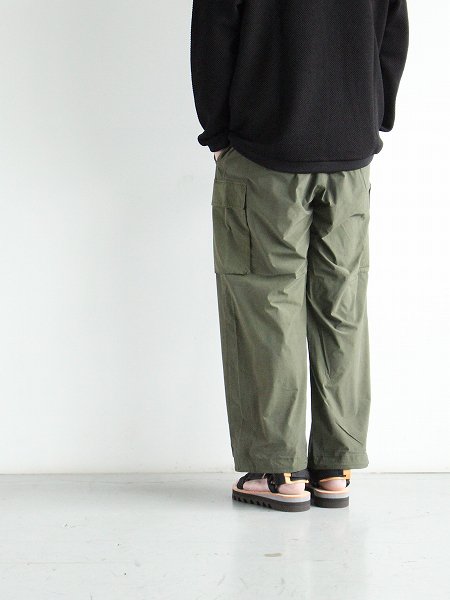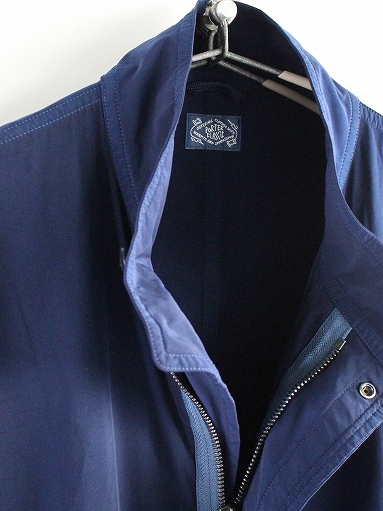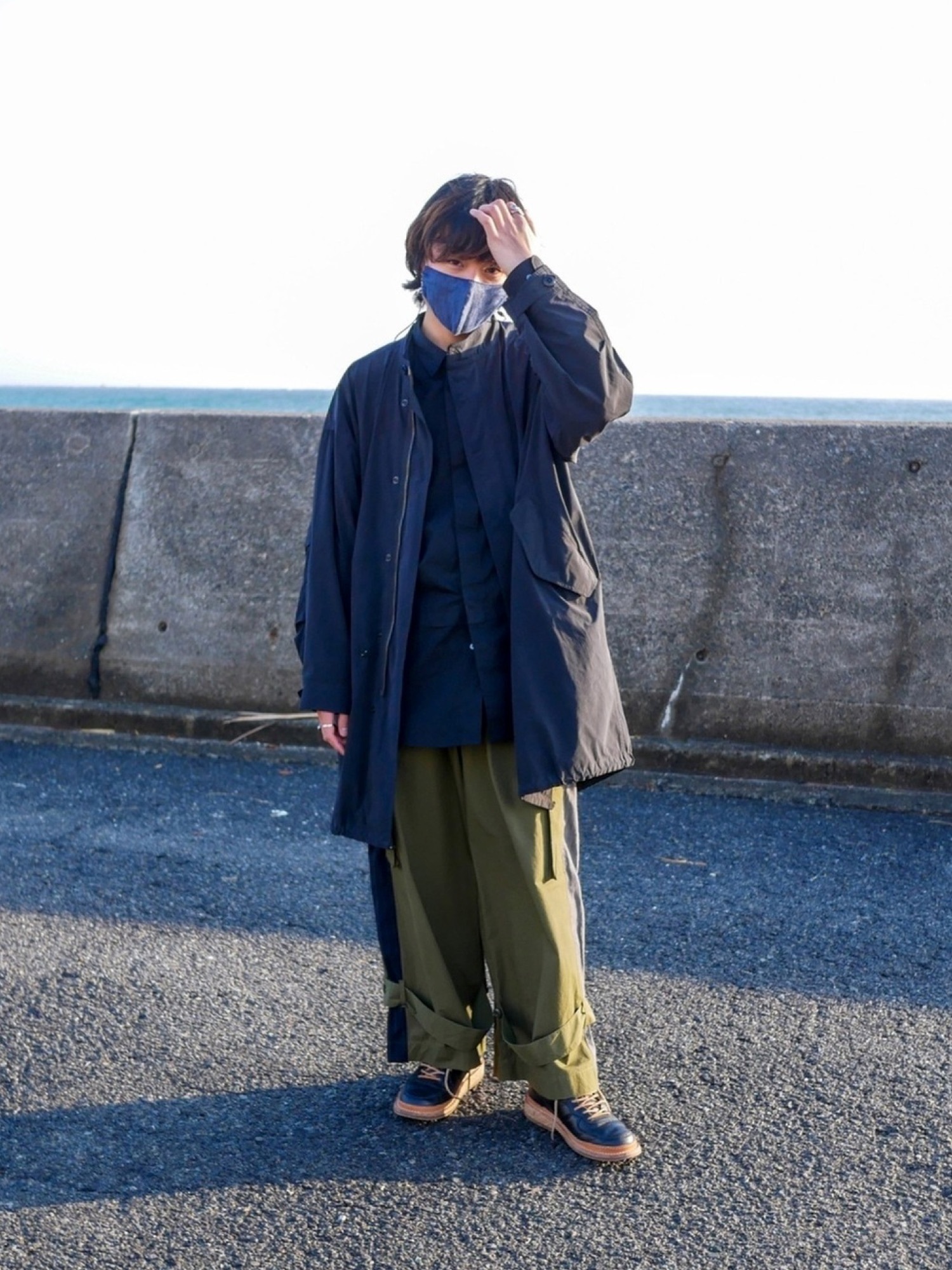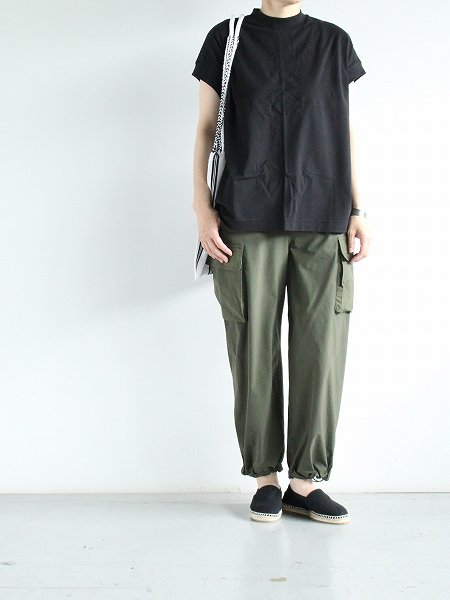PorterClassic SUPER NYLON STRETCH PANTS青
(税込) 送料込み
商品の説明
スーパーナイロンの冷んやり気持ち良い肌触りに、ついにストレッチまできかせてしまったこのパンツは、もう履き心地モンスターです。
これ一つあれば春、夏、秋、安心です。
別で出品中の黒もセットでお持ちください。
PorterClassic集めすぎて1人では着回せないため、新たなオーナーを探します。
ほぼ着ていないのでめちゃくちゃ状態良いです。
¥39,600 (tax included)→18,900商品の情報
| カテゴリー | メンズ > パンツ > その他 |
|---|---|
| 商品のサイズ | L |
| ブランド | ポータークラシック |
| 商品の状態 | 未使用に近い |

Porter Classic - SUPER NYLON STRETCH PANTS - BLUE|ポーター

SUPER NYLON STRETCH PANTS|Porter Classic(ポータークラシック)

SUPER NYLON STRETCH PANTS|Porter Classic(ポータークラシック)

Porter Classic - SUPER NYLON STRETCH PANTS - BLUE|ポータークラシック スーパーナイロン バッグ カバン 通販 正規店 フェートン Phaeton

Porter Classic SUPER NYLON STRETCH PANTS | HUES 福岡セレクトショップ

Porter Classic - SUPER NYLON STRETCH PANTS - BLUE|ポータークラシック スーパーナイロン バッグ カバン 通販 正規店 フェートン Phaeton
ポータークラシック SUPER NYLON STRETCH PANTS スーパーナイロン

Porter Classic SUPER NYLON STRETCH PANTS / OLIVE (MENS & LADIES

SUPER NYLON STRETCH PANTS - Blue

ポータークラシック SUPER NYLON STRETCH PANTS | www.carmenundmelanie.at

Porter Classic - SUPER NYLON STRETCH MILITARY COAT - BLUE
ポータークラシック SUPER NYLON STRETCH PANTS スーパーナイロン

Porter Classic - SUPER NYLON STRETCH JACKET - BLUE|ポーター

Porter Classic SUPER NYLON STRETCH MILITARY COAT / BLUE

Porter Classic(ポータークラシック) / SUPER NYLON STRETCH PANTS

PORTER CLASSIC ポータークラシック 20AW SUPER NYLON STRETCH JACKET

Porter Classic(ポータークラシック) / SUPER NYLON STRETCH PANTS
ポータークラシック SUPER NYLON STRETCH PANTS スーパーナイロン

Japanese Brand - Porter Classic | Online Fashion | Blog | ANDJOY

PORTER CLASSIC ポータークラシック 20AW SUPER NYLON STRETCH JACKET

げんき|Porter Classicのモッズコートを使ったコーディネート - WEAR

SUPER NYLON JODHPURS PANTS|Porter Classic(ポータークラシック)

poter classic supernylonstretchpants-

Porter Classic SUPER NYLON STRETCH PANTS | HUES 福岡セレクトショップ

Porter Classic | ANDJOY
ポータークラシック SUPER NYLON STRETCH PANTS スーパーナイロン

Porter Classic - SUPER NYLON STRETCH JACKET - BLUE|ポーター

Porter Classic(ポータークラシック) INDIGO LINEN SHIRT JACKET

POTER CLASSIC - SUPER NYLON STRETCH JACKET

Porter Classic - STRETCH CHINESE PANTS - NAVY ポータークラシック

ポータークラシック STRETCH PANTS テーパードパンツ 中綿 L 紺 | www

Porter Classic(ポータークラシック) / SUPER NYLON STRETCH PANTS

Porter Classic SUPER NYLON STRETCH PANTS / OLIVE (MENS & LADIES

WEATHER WIDE PANTS | 【OFFICIAL】PORTER CLASSIC ONLINE SHOP

mrpc43|Porter Classicのデニムパンツを使ったコーディネート - WEAR
ポータークラシック SUPER NYLON STRETCH PANTS スーパーナイロン

Porter Classic 2020SS 03/14 通販 - 正規取扱店 | COLLECT STORE BLOG
![Porter Classic[ポータークラシック] | ハードワーク テンセル](https://boo-bee-2.s3-ap-northeast-1.amazonaws.com/upload/save_image/10021823_651a8bf77e53e.jpg)
Porter Classic[ポータークラシック] | ハードワーク テンセル

PORTER CLASSIC ポータークラシック 20AW SUPER NYLON STRETCH JACKET

Porter Classic - SUPER NYLON STRETCH PANTS - BLUE|ポーター

商品の情報
メルカリ安心への取り組み
お金は事務局に支払われ、評価後に振り込まれます
出品者
スピード発送
この出品者は平均24時間以内に発送しています














